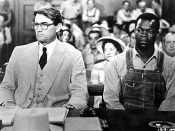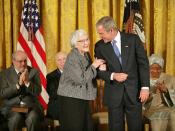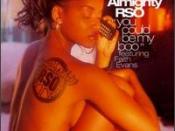To Kill a Mockingbird is definitely an excellent novel in that it portrays life and the role of racism in the 1930's. A reader may not interpret several aspects in and of the book through just the plain text. Boo Radley, Atticus, and the title represent three such things.
Not really disclosed to the reader until the end of the book, Arthur 'Boo' Radley plays an important role in the development of both Scout and Jem. In the beginning of the story, Jem, Scout, and Dill fabricate horror stories about Boo. They find Boo as a character of their amusement, and one who has no feelings whatsoever. They tried to get a peep at him, just to see what Boo looked like. Scout connects Boo with the Mockingbird. Mrs. Maudie defines a mockingbird as one who '...don't do one thing but make music for us to enjoy. They don't eat up people's gardens, don't nest in corncribs, they don't do one thing but sing their hearts out for us' (94).
Boo is exactly that. Boo is the person who put a blanket around Scout and Jem when it was cold. Boo was the one putting 'gifts' in the tree. Boo even sewed up Jem's pants that tore on Dill's last night. Boo was the one who saved their lives. On the contrary to Scout's primary belief, Boo never harms anyone. Scout also realizes that she wrongfully treated Boo when she thinks about the gifts in the tree. She never gave anything back to Boo, except love at the end. When Scout escorts Arthur home and stands on his front porch, she sees the same street she saw, just from an entirely different perspective. Scout learns what a Mockingbird is, and who represents one.
Arthur Radley not only plays an important...


